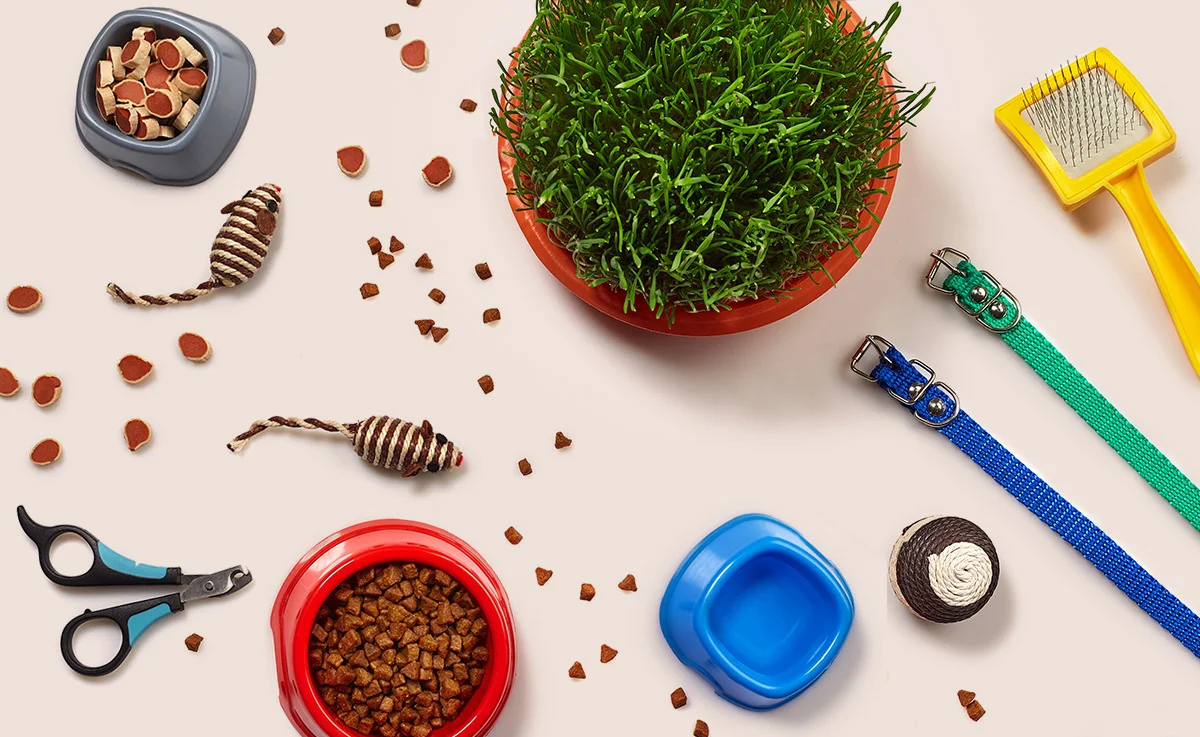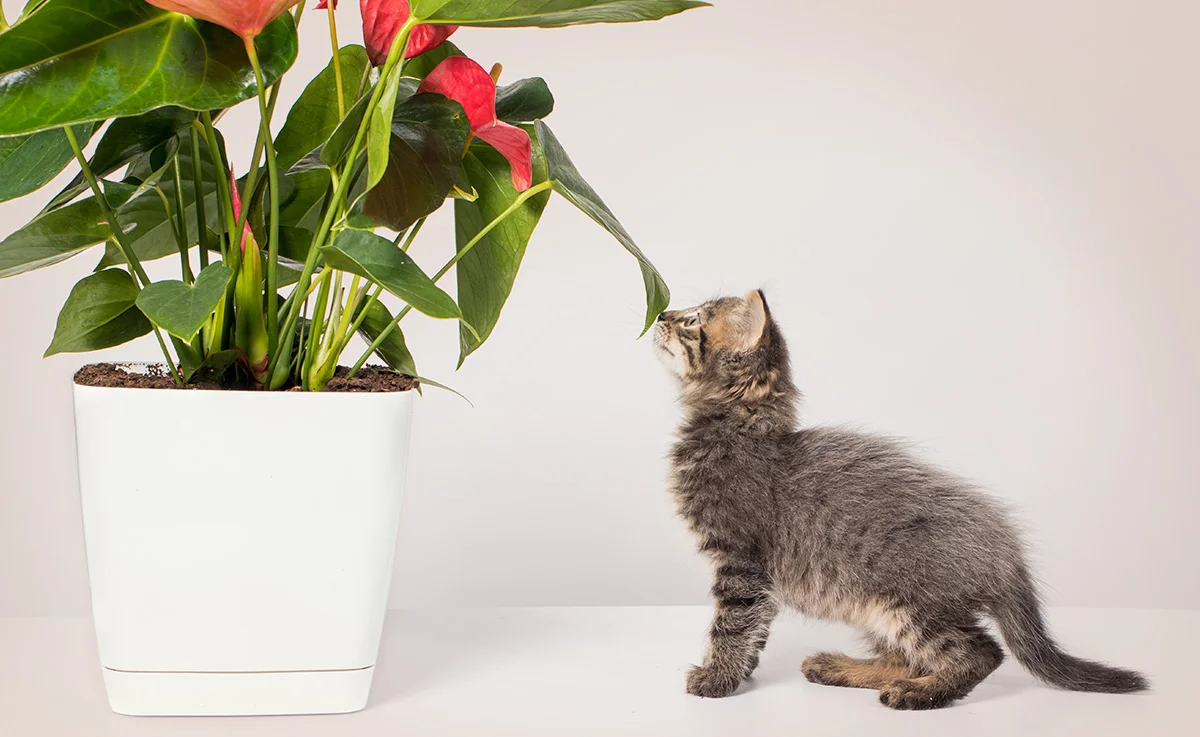
Welcome Your New Kitten: Getting Started
Congratulations! You’re about to embark on the delightful journey of kitten parenthood. Filled with playful antics and heartwarming cuddles, kittens bring a unique kind of joy into our lives. But before you get swept away in the cuteness, there are a few preparations to ensure a smooth transition for your tiny furball.
This guide will equip you with the essentials to create a welcoming and comfortable environment for your new arrival. With these essentials in place, you’ll be well on your way to welcoming your new kitten into a loving and nurturing home and will ensure your furry friend is happy, healthy, and entertained.

Kitten Starter Kit Essentials
To make your kitten feel right at home, you’ll need to gather some standard cat supplies. Here’s a breakdown of the must-haves:
Food and Feeding Supplies
- Kitten Food: Kittens have specific dietary needs for healthy development. Choose a high-quality kitten food recommended by your veterinarian or a reputable pet store.
- Food and Water Bowls: Select shallow, wide-mouthed bowls made from stainless steel or ceramic for easy cleaning and to prevent whisker fatigue.
Pro-Tip: Opt for bowls with a non-slip base to avoid spills and playful batting.
Cozy Bed and Sleep Area
- Kitten Bed: Provide a comfortable bed where your kitten can feel secure and rest undisturbed. Choose a soft, washable bed in a size suitable for your growing kitten.
- Sleeping Area: Designate a quiet corner or a separate room for your kitten’s sleep area, away from drafts and loud noises.
Bonus Tip: Include a soft blanket or cuddly toy in their bed to add a sense of familiarity and comfort.
Litter Box and Litter
A properly set-up litter box is crucial for a kitten’s well-being and keeping your home clean and sanitary. Here’s how to get it right:
- Location: Choose a quiet, easily accessible location away from your kitten’s food and water bowls.
- Size and Type: Select a litter box that’s large enough for your kitten to comfortably turn around in. Covered boxes can offer privacy for some kittens, while open boxes might be preferred by others. Experiment to see what your kitten likes best.
- Litter: Opt for a kitten-specific litter that’s gentle on their paws and easy to scoop. Avoid clumping litter until your kitten is at least four months old, just in case they try to eat it.
- Scooping: Scoop waste daily and completely change the litter once a week to maintain a clean and hygienic environment.
Playtime: Toys and Scratching Posts
Kittens are energetic creatures who need plenty of playtime to expend their boundless energy. Here’s how to keep them stimulated and out of mischief:
- Toys: Provide a variety of safe and engaging toys that cater to their natural instincts. Rotate cat toys regularly to keep playtime interesting. Consider wand toys that mimic prey, puzzle feeders that challenge their problem-solving skills, and crinkly balls for batting practice.
- Scratching Post: Scratching is an essential feline behavior. Invest in a sturdy scratching post covered in sisal or another scratchable material. Place it in a prominent location where your kitten can easily access it.
By providing these outlets for play and scratching, you’ll help prevent destructive behaviors like clawing at furniture.
Grooming Essentials
Regular grooming helps keep your kitten’s fur clean and healthy, minimizing hairballs and promoting a strong bond between you. Here’s a basic grooming kit for your kitten:
- Soft Bristle Brush: A gentle brush will remove loose fur and dander without irritating your kitten’s skin.
- Flea Comb: Regularly check for fleas and ticks with a fine-tooth flea comb.
- Nail Clippers: Trimming your kitten’s nails regularly prevents them from getting snagged or causing scratches. Ask your veterinarian for guidance on proper nail-trimming techniques.
Remember, grooming sessions should be gentle and positive experiences. Reward your kitten with praise and treats to keep them happy and cooperative. Following these essential care tips will equip you with the knowledge and tools to keep your kitten happy and healthy.
Leashes and Collars
While nothing might seem cuter than a kitten wearing a collar with a little bell on it, leashes and collars are generally not recommended for kittens. Leash training can be stressful for kittens who are still adjusting to their new home, and their delicate necks can be easily irritated by collars. Focus on creating a safe indoor environment for your new arrival and prioritize playtime with engaging toys. Leash training can be introduced later, once your kitten is older and more comfortable exploring the world outside. When they are ready, Ocean State Job Lot has a variety of leashes and collars for your fancy feline.

Health Care and First Vet Visit
Scheduling your kitten’s first veterinary visit is crucial for their health and development. Here’s what to expect:
- Timing: Aim to schedule your kitten’s first vet visit within a week or two of bringing them home, ideally before they reach eight weeks old.
- Preparation: Gather any information about your kitten’s background, such as vaccination history or deworming treatments, from the shelter or breeder. Prepare a list of any questions or concerns you may have for the veterinarian.
- The Visit: The vet will conduct a thorough physical examination, check for parasites, and discuss your kitten’s vaccination schedule. This visit sets the foundation for a healthy and happy life for your feline companion.
- Beyond the first visit: Establish a regular check-up schedule with your veterinarian. These routine check-ups allow for early detection and treatment of any potential health issues.

Safety Measures: Kitten-Proofing Your Home
Kittens are naturally curious and love to explore their surroundings. However, their playful nature can lead them into potentially dangerous situations. Here’s how to create a safe haven for your tiny adventurer:
- Electrical Cords: Kittens are fascinated by dangling wires. Secure electrical cords behind furniture or use cord protectors to prevent chewing and electrical shocks.
- Toxic Plants: Many common houseplants are toxic to cats. Research and remove any potentially harmful plants from your home. This toxic plant list from the ASPCA is a good resource to help you keep your kittens and cats safe.
- Cleaning Products and Medications: Keep all cleaning supplies, medications, and other harmful chemicals out of reach on high shelves or in cabinets with secure latches.
- Secure Windows and Doors: Ensure windows and doors are properly screened to prevent escapes.
- Small Objects: Pick up small objects like coins, rubber bands, or sewing needles that could be choking hazards.
- Hot Surfaces: Keep your kitten away from hot stoves, ovens, and irons to prevent burns.
By taking these precautions, you can create a safe and stimulating environment where your kitten can explore and play freely. Remember, a healthy kitten thrives in a safe and loving environment.

Conclusion: Ready for the Joy of Kittenhood
Bringing home a kitten is an exciting time filled with the promise of playful antics, heartwarming cuddles, and years of companionship. However, with this joy comes the responsibility of ensuring their well-being.
Throughout this blog post, we’ve explored essential steps to prepare for your new arrival. From kitten-proofing your home to establishing a regular veterinary care routine, we’ve equipped you with the knowledge and tools to create a safe and nurturing environment.
Remember, kittens require specific food and litter box needs, stimulating playtime with engaging toys, and gentle yet essential grooming routines. While the initial weeks may require some adjustments, the rewards are truly boundless. Witnessing your kitten blossom into a healthy, confident, and playful feline companion is a unique and enriching experience. So, with a little preparation and a lot of love, you’re well on your way to embarking on the delightful journey of kittenhood. Get ready for a purr-fect adventure!
